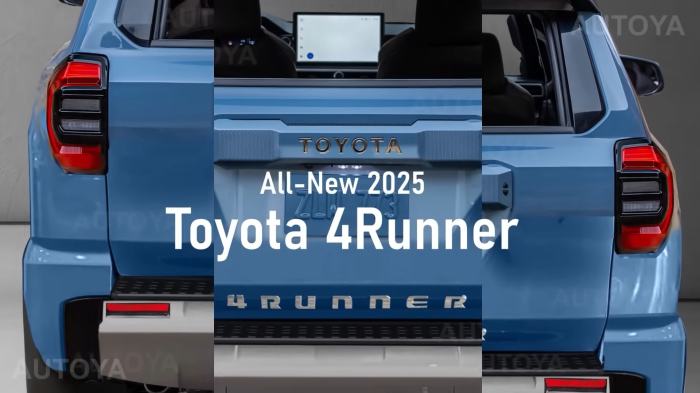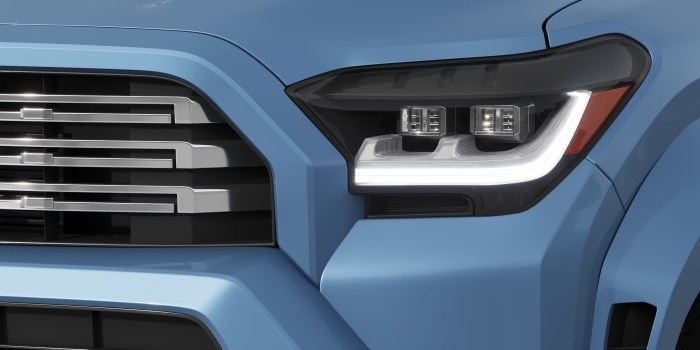The Toyota 4Runner, known for its rugged durability and off-road capabilities, can provide years of reliable service. However, proper maintenance is crucial to maximizing its lifespan and ensuring optimal performance. This comprehensive guide will detail the essential maintenance practices for your 4Runner, helping you keep it running smoothly well into 2025 and beyond. We’ll cover everything from routine checks to more involved procedures, ensuring you’re equipped to handle most maintenance tasks yourself or effectively communicate with your mechanic.
Regular Maintenance: The Foundation of a Long-Lasting 4Runner
Regular maintenance is the cornerstone of extending your 4Runner’s life. These tasks should be performed according to your owner’s manual’s recommended schedule, but generally, they fall into these categories:
Oil Changes: The Lifeblood of Your Engine
Regular oil changes are paramount. The frequency depends on your driving habits and the type of oil used (conventional, synthetic blend, or full synthetic). Consult your owner’s manual for the recommended interval, but generally, every 5,000-7,500 miles for conventional oil and 7,500-10,000 miles for synthetic oil is a good starting point. Don’t forget to change the oil filter simultaneously.
Using high-quality oil and filters is a worthwhile investment in your engine’s longevity. Consider using a Toyota-approved oil filter for optimal performance.
Fluid Checks and Changes: Staying Hydrated
Beyond engine oil, regularly check and change other vital fluids:
- Coolant: Check coolant levels regularly and flush and replace the coolant every 2-3 years or as recommended in your owner’s manual. This prevents overheating and protects your engine from corrosion.
- Transmission Fluid: The transmission fluid lubricates and cools the transmission. Have it checked and changed according to the recommended schedule in your owner’s manual. This is especially important for automatic transmissions.
- Brake Fluid: Brake fluid absorbs moisture over time, reducing its effectiveness. Have it flushed and replaced every 2-3 years to maintain optimal braking performance and safety.
- Power Steering Fluid: Check the power steering fluid level regularly and top it off as needed. Have it flushed and replaced as recommended in your owner’s manual.
Tire Care: Maintaining Traction and Safety
Proper tire care is crucial for safety and handling. Regularly check tire pressure (using a reliable gauge) and ensure it’s within the recommended range specified on the sticker located on your driver’s side doorjamb or in your owner’s manual. Rotate your tires every 5,000-7,500 miles to ensure even wear. Inspect your tires for wear and tear, cuts, or bulges.
Replace worn tires promptly to maintain optimal traction and safety.
Filter Replacements: Clean Air and Fuel
Replacing air filters, cabin air filters, and fuel filters regularly ensures clean air and fuel reach your engine. A clogged air filter restricts airflow, reducing engine performance and fuel efficiency. A dirty cabin air filter can affect the quality of the air inside your vehicle. A clogged fuel filter can restrict fuel flow, leading to engine problems.
Refer to your owner’s manual for the recommended replacement intervals.
Preventive Maintenance: Proactive Steps for a Longer Life
Beyond routine maintenance, proactive measures can significantly extend your 4Runner’s lifespan:
Regular Inspections: Catching Problems Early
Regularly inspect your 4Runner for any signs of wear and tear. Check belts, hoses, and other components for cracks, leaks, or damage. Listen for any unusual noises coming from the engine, transmission, or other parts of the vehicle. Addressing small issues early can prevent them from escalating into major, costly repairs.
Battery Care: Keeping the Power On
Your 4Runner’s battery is a crucial component. Regularly check the battery terminals for corrosion and clean them as needed. Have your battery tested periodically to ensure it’s holding a charge properly. Replace your battery before it fails to avoid unexpected breakdowns.
Suspension and Steering: Smooth Sailing
The suspension and steering systems are vital for safe and comfortable driving. Regularly inspect these components for wear and tear. Have them professionally inspected and serviced as needed. Ignoring suspension or steering problems can lead to dangerous driving conditions.
Brake System Inspection: Ensuring Safety
Your brake system is your most critical safety feature. Regularly inspect your brake pads and rotors for wear. Have your brake system inspected and serviced by a qualified mechanic as needed. Don’t compromise on brake safety.
Undercarriage Protection: Off-Road Considerations
If you frequently drive your 4Runner off-road, consider adding undercarriage protection to safeguard against damage from rocks and debris. Regularly clean the undercarriage to remove mud, dirt, and other debris that can accumulate and cause corrosion.
Advanced Maintenance: Addressing Specific Components
As your 4Runner ages, some components may require more specialized attention:

Source: autoevolution.com
Timing Belt Replacement: A Crucial Interval
The timing belt is a critical component that synchronizes the engine’s valves and pistons. Replacing it at the recommended interval (consult your owner’s manual) is crucial to prevent catastrophic engine damage. Failure to replace the timing belt can result in a costly engine rebuild or replacement.
Differential Maintenance: Off-Road Specific Care
For those who frequently use their 4Runner for off-road adventures, regular differential maintenance is essential. This includes checking the fluid levels and changing the fluid at recommended intervals. Off-road driving can put extra stress on the differentials, so proper maintenance is crucial.
Transfer Case Maintenance: Four-Wheel Drive Systems
If your 4Runner has a four-wheel-drive system, the transfer case requires regular maintenance. Check the fluid level and change the fluid as recommended in your owner’s manual. This ensures smooth shifting between 2WD and 4WD modes.
Frequently Asked Questions (FAQ)
- Q: How often should I rotate my tires? A: Every 5,000-7,500 miles is generally recommended, but check your owner’s manual for specific guidance.
- Q: What type of oil should I use in my 4Runner? A: Consult your owner’s manual for the recommended oil type and viscosity.
- Q: How often should I change my timing belt? A: The recommended interval varies depending on the model year and engine. Consult your owner’s manual for the specific recommendation. This is a crucial maintenance item.
- Q: How can I tell if my brakes need replacing? A: Look for squealing or grinding noises, a spongy brake pedal, or a longer braking distance. Have your brakes inspected by a mechanic if you notice any of these issues.
- Q: What are the signs of a bad transmission? A: Slipping gears, rough shifting, unusual noises, or leaking fluid are all signs of potential transmission problems. Get it checked by a professional immediately.
Resources
- Toyota Official Website
-Find your owner’s manual and other helpful resources. - YourMechanic
– A convenient resource for finding qualified mechanics and getting repair quotes.
Call to Action
By following these maintenance tips, you can significantly extend the lifespan of your Toyota 4Runner and enjoy many years of reliable performance. Schedule your next service appointment today and keep your 4Runner running strong!
FAQ Corner
What type of oil should I use in my 4Runner?

Source: zifir3d.com
Consult your owner’s manual for the recommended oil type and viscosity for your specific year and model of 4Runner. Using the incorrect oil can damage your engine.
How often should I rotate my tires?
Tire rotation is typically recommended every 5,000-8,000 miles, or as specified in your owner’s manual. Proper rotation ensures even tire wear.
What are the signs of a failing transmission?
Signs of transmission trouble include slipping gears, harsh shifting, unusual noises, or difficulty shifting. If you notice any of these, have your transmission inspected by a qualified mechanic immediately.
How often should I replace my brake pads?
Brake pad replacement frequency varies depending on driving habits and conditions. However, it’s generally recommended to have your brakes inspected at every oil change and replace them when worn down to a certain level. Consult your owner’s manual or a mechanic for specifics.
